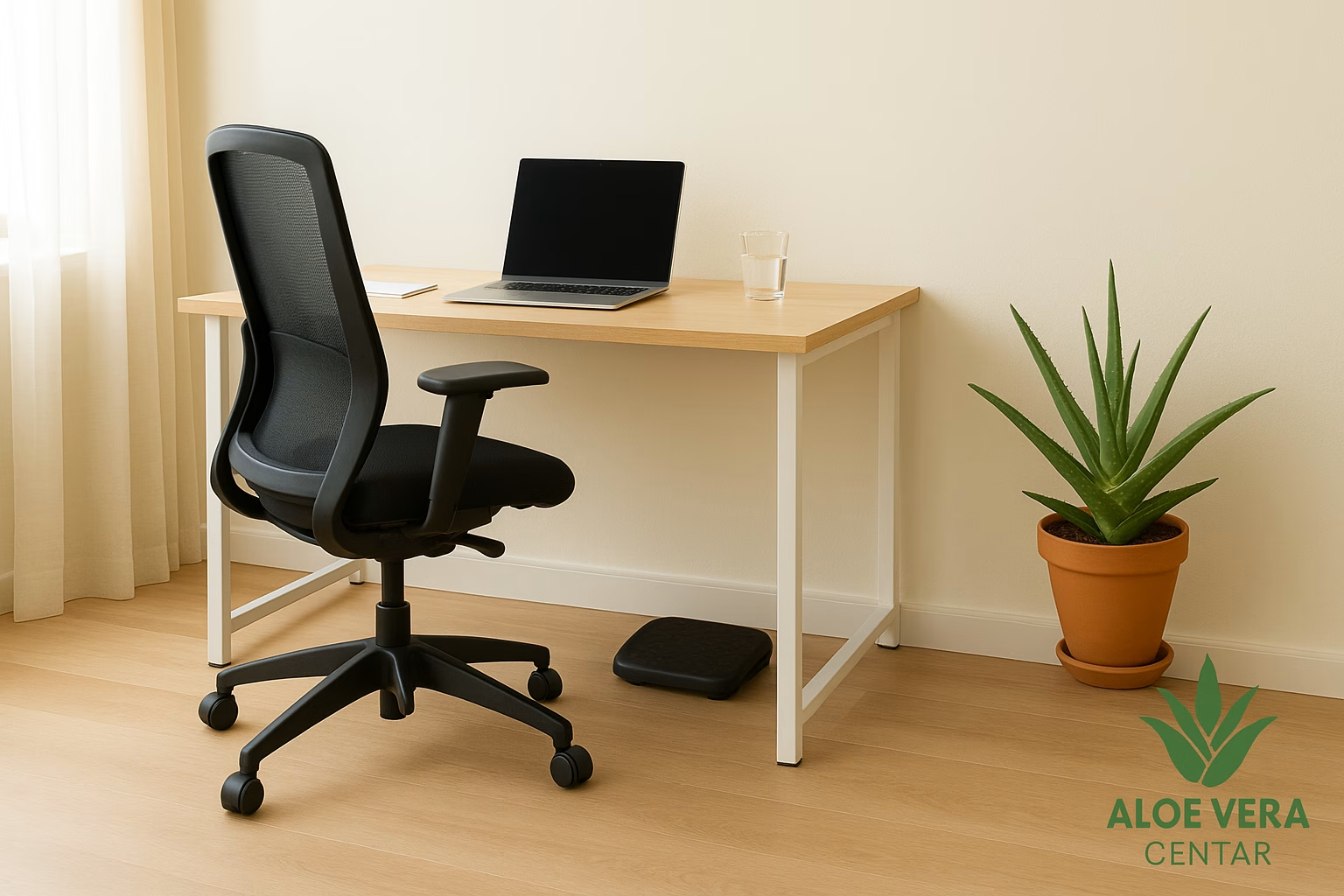
Proper Sitting and Ergonomics – how They Protect your Back, Heart, and Productivity
Proper Sitting and Ergonomics: the Key to your Overall Health
Proper posture might sound like advice from school days, but growing research shows that how you sit directly affects your energy, productivity, and long-term health. Have you ever wondered why your back hurts after work or why you feel tired even though you haven’t done heavy physical work? Keep reading to discover how simple changes in body position can transform your daily life.
Why Does Sitting Trouble Us?
Most adults in Croatia spend more than seven hours daily sitting, significantly exceeding World Health Organization recommendations. Each additional hour spent in a static position increases cardiovascular disease risk by 2%. Wondering why? Poor posture causes musculoskeletal disorders, weakens circulation, and strains the spine.
A Quick Look at Anatomy
- The lumbar spine takes the most pressure when sitting.
- Core muscles (abdominal and back) maintain upright posture.
- Discs act as shock absorbers but dry out when we maintain the same position for hours.
Ergonomic Workspace: the Gold Standard
Here’s the thing: buying an expensive chair isn’t enough if you’re still sitting incorrectly. To achieve optimal ergonomics, follow these guidelines:
- Chair height – knees at 90 degrees, feet flat on the floor or footrest.
- Backrest angle – slight 100-degree angle promotes natural spine curvature.
- Monitor position – top edge at eye level reduces neck strain.
- Keyboard and mouse – forearms parallel to floor, wrists relaxed.
Need a visual reminder? Our AI advisor can analyze a photo of your workspace and provide personalized recommendations in seconds.
Health Consequences of Poor Sitting
Is your Spine Hurting? You’re not Alone
Lower back pain is among the most common complaints of office workers. If this sounds familiar, be sure to check out our guide on joint pain and natural solutions that explains in detail how inflammation and improper posture go hand in hand.
Decreased Energy and Concentration
Prolonged sitting slows circulation and reduces oxygen flow to the brain. The result is fatigue and difficulty focusing. Short two-minute breaks can increase blood flow by 20%.
Cardiovascular System Risks
According to WebMD’s 2024 report, a sedentary lifestyle is directly linked to high blood pressure. One effective way to boost circulation is a short walk with hydration – how much water should you drink? Find out in our article how much water to drink daily.
Strategies for Better Ergonomics Starting Today
1. The 30-30 Method
Sit for 30 minutes, then spend two minutes doing light stretching or walking to the kitchen. There’s no better way to break monotony and engage your muscles.
2. Active Sitting
A Pilates ball or balance cushion can engage core muscles. Sounds too good to be true? Keep reading…
3. Ergonomic Accessories
Monitor stands, footrests, and lumbar supports can reduce tension.
4. Thermal Support for Back
Feeling stiff? A gentle massage gel like Aloe MSM Gel provides soothing cooling and promotes microcirculation.
Additional Natural Allies
Along with proper sitting, flexible joints and cartilage are crucial for long-term spine health. Supplements like Forever Freedom containing glucosamine, chondroitin, and vitamin C can help maintain cartilage tissue.
Feeling stressed about deadlines? Discover natural relaxation methods because muscle tension often starts in the head and manifests in the shoulders.
If you’re considering a comprehensive approach, take advantage of 15% off your first order and get ergonomic accessories and supplements at a reduced price.
Exercises You Can Do at your Desk
- Neck stretches – tilt your head to one side then the other, hold for ten seconds.
- Shoulder blade squeezes – pull shoulder blades back and down, repeat ten times.
- Desk squat – move your chair away, hold a half-squat for 15 seconds.
- Trunk rotation – sit upright, rotate upper body right and left.
If you’re prone to inflammation or autoimmune conditions like autoimmune diseases, regular movement and posture correction can alleviate symptoms by reducing systemic inflammation.
Frequently Asked Questions
How Often should I Stand up During the Workday?
It’s recommended to stand up for at least two minutes every 30 minutes. Short active breaks are proven to improve circulation and reduce lower back pain.
Can an Ergonomic Chair Alone Solve My Back Problems?
An ergonomic chair helps, but it’s not a magic wand. Combine it with proper desk height adjustment and regular stretching for optimal results.
Is Standing Better than Sitting?
Short periods of standing are excellent for breaking up sitting time, but prolonged standing strains the knees. It’s best to alternate positions.
Can Supplements Help with Sitting-Related Pain?
Supplements like glucosamine, omega-3 fatty acids, and collagen can support joints, but the key is synergy between proper posture, exercise, and balanced nutrition.
Conclusion
When you adopt proper sitting, your body, mind, and productivity will experience transformation. Try the methods from this article today and watch the difference. Need additional support? Contact our AI advisor or take advantage of 15% off selected ergonomic accessories and natural supplements. Your spine will thank you.
More Recommendations for a Healthier Work Day
Proper sitting works best when combined with good morning habits. Check out our guide on healthy morning routine and learn how a few simple steps can boost energy and focus from early morning.
Neck and shoulder tension caused by prolonged sitting often leads to migraines. In our article about migraines and symptoms, you’ll find useful information on how to recognize and reduce the risk of attacks.
By combining ergonomic adjustments, active breaks, and mindful daily rituals, you protect your spine, improve circulation, and reduce stress – the foundation of overall health.
Note: This article is for informational purposes only and is not a substitute for professional medical advice. For individual guidance, consult a doctor or physiotherapist.








